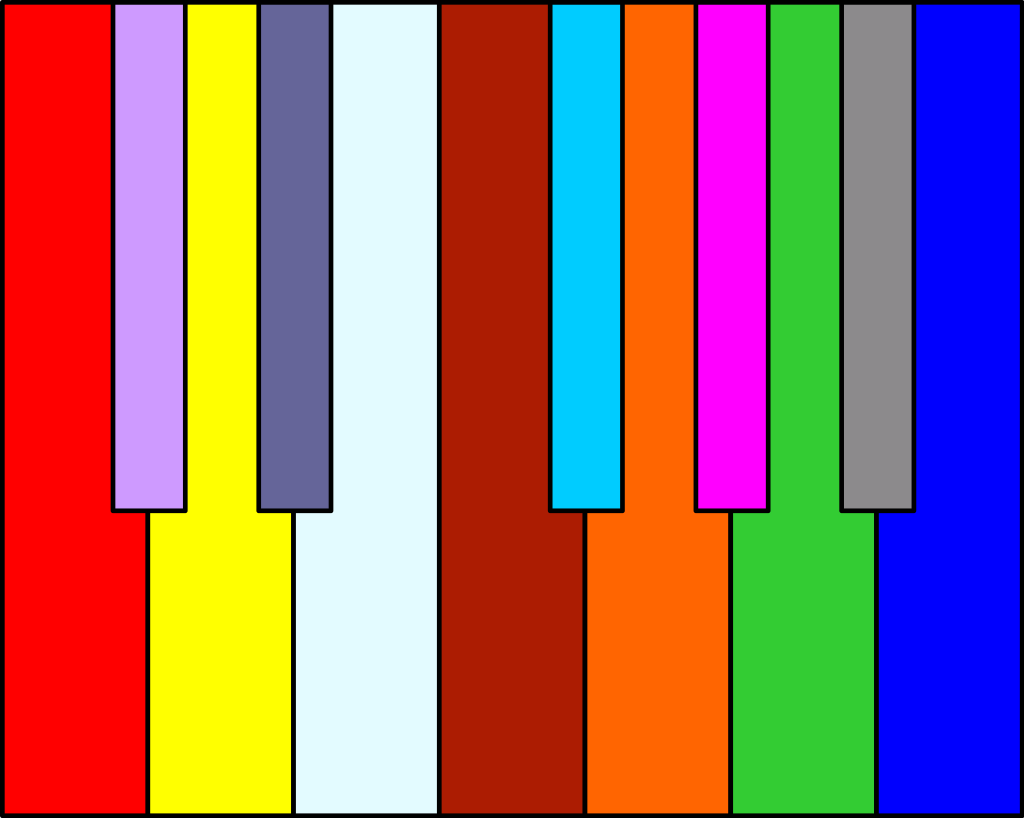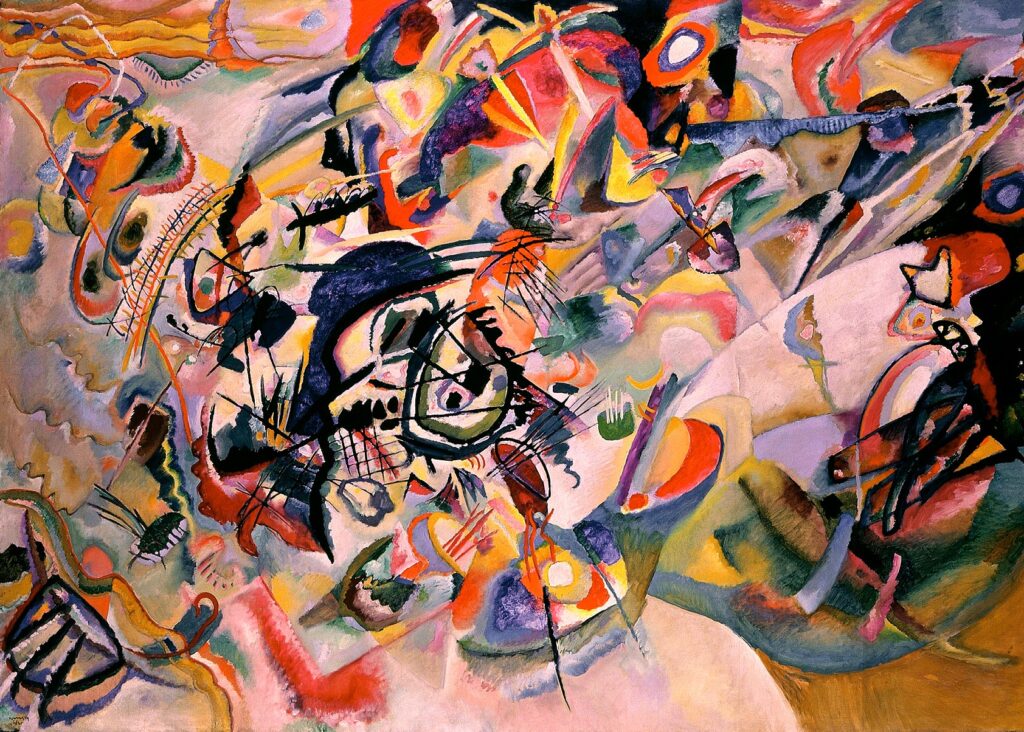
Chromesthesia is also known as sound-to-color synesthesia. It is a type of synesthesia in which sound creates an involuntary experience of color and also sometimes shapes and movements. People who experience Chromesthesia report a wide variety of differing colors, though many have been found to experience a similar pattern, as shown in the image of a keyboard below.

Many individuals who see color while listening to music, experience them simply in addition to their normal visual senses. It should be noted that they perceive it spontaneously and without any effort.
So, what exactly is chromesthesia? At its core, chromesthesia is a type of synesthesia, which is a neurological condition where the stimulation of one sense leads to the automatic and involuntary experience of another sense. In the case of chromesthesia, hearing sounds or music triggers the experience of seeing colors. These colors can be vivid, subtle, or even abstract, and can vary from person to person.
While the exact mechanism behind chromesthesia is not fully understood, it is thought to involve the way that different sensory regions of the brain are connected and communicate with each other. In individuals with chromesthesia, it is believed that there may be an abnormal connection between the regions of the brain responsible for processing sound and color, leading to the experience of seeing colors in response to certain sounds.
While chromesthesia is a rare phenomenon, it has been studied by researchers in both the fields of psychology and neuroscience. One of the earliest studies on chromesthesia was conducted in the 1940s by a psychologist named George Miller. Miller found that individuals with chromesthesia had consistent associations between certain sounds and colors, suggesting that the condition is not purely random and may be related to the structure of the brain.
Since then, many other researchers have explored chromesthesia, looking at things like the neural mechanisms involved, the differences in experiences between individuals, and the ways in which chromesthesia may affect artistic and creative abilities. Some studies have even suggested that individuals with chromesthesia may have better memory for sounds and music, as well as improved musical abilities.
Despite the intriguing nature of chromesthesia, there is still much that is unknown about this condition. For example, researchers are still trying to determine why some people develop chromesthesia while others do not, and what the underlying genetic and environmental factors may be. Additionally, there is still much to learn about the different types and variations of chromesthesia, as well as the potential impact that it may have on individuals’ lives and experiences.
Several notable composers have experienced Chromesthesia including Hungarian composer Franz Liszt and American composer Leonard Bernstein. Liszt would famously instruct an orchestra to play the music in a “Bluer Fashion”, perhaps not realizing they didn’t understand the music in the same way that he did.
Russian painter and art theorist Wassily Kandinsky was a pioneer of abstract art, and used his Chromesthesia to his advantage. In 1913 he painted ‘Fragment 2 for Composition VII‘ which wonderfully shows the colors and shapes that he experiences during classical musical performances.
In conclusion, chromesthesia is a fascinating and rare phenomenon that involves the experience of seeing colors in response to hearing sounds or music. While much is still unknown about this condition, research has provided us with a basic understanding of how it works and some of the potential implications it may have for individuals who experience it. For those who are curious about chromesthesia, there are many resources available, including online forums, support groups, and even organizations dedicated to studying and raising awareness about this unique phenomenon.

Kaitlyn Hova is a professional violinist, composer and neuroscientist who experiences Chromesthesia. In 2017 she gave a TEDtalk in which she plays a violin that has been altered to include lights that reflect the colors that she experiences when hearing, and playing, certain notes. Check out the video below. Her incredible performance begins at 5min 20sec.
More Interesting Links:
Audio Engineer Interviews
FOH Engineer Garry Brown (Phish, Trey Anastasio Band, Oysterhead)
Behind the Live Sound of Coldplay with Daniel Green
Red Hot Chili Peppers – Dave Rat FOH Engineer
